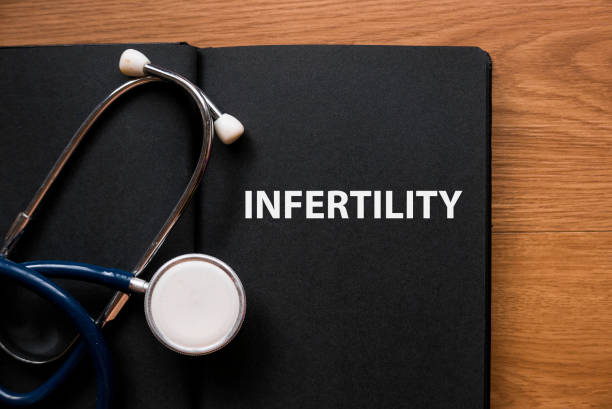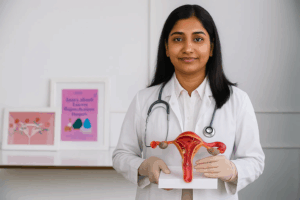If you’ve had a baby before but are struggling to get pregnant again, it can be upsetting and hard to understand. This is known as secondary infertility. Some people think infertility only happens to those who’ve never been pregnant, but secondary infertility is actually very common and there are ways to treat it.
In this article, we’ll explain what causes secondary infertility, how it’s diagnosed, and the treatment options available so you can take the next step with clarity and confidence.
What is Secondary Infertility?
Secondary infertility is the inability to conceive or carry a pregnancy to term after previously giving birth without using fertility treatments. If you’ve been trying to get pregnant for over 12 months, you may be experiencing this condition.
How Common is Secondary Infertility in India?
More people in India are learning about primary infertility, but secondary infertility is just as common. It just doesn’t get as much attention.
Studies by the Indian Council of Medical Research (ICMR) and WHO show that 10-14% of Indian couples struggle with infertility. Out of these, 25-30% already have at least one child.
So, if 100 couples in India can’t get pregnant, 25 to 30 of them are likely parents already.
Common Causes of Secondary Infertility
There isn’t one single reason for secondary infertility. It can result from changes in reproductive health, age, or even medical conditions that developed after the first pregnancy.
Here are some common causes:
Cause | Description | Possible Treatments |
Age-Related Fertility Decline | Reduced egg quality in women over 35; reduced sperm quality in older men. | IVF, IUI, egg/sperm donor programs. |
Hormonal Imbalances | PCOS, thyroid disorders, or high prolactin levels affecting ovulation. | Ovulation induction medication, hormone therapy. |
Fallopian Tube or Uterine Problems | Blocked tubes, fibroids, uterine adhesions preventing conception. | Surgery (laparoscopy/hysteroscopy), IVF. |
Male Factor Infertility | Low sperm count, poor motility, or abnormal morphology. | Lifestyle changes, medication, ICSI. |
Lifestyle & Health Factors | Obesity, smoking, alcohol, poor diet, high stress. | Lifestyle modification, nutritional therapy. |
How is Secondary Infertility Diagnosed?
Your doctor will begin with a thorough medical history and may recommend:
- Blood tests – To check hormone levels such as FSH, LH, AMH, and thyroid hormones.
- Ultrasound scan – To assess ovulation, ovarian reserve, and detect issues like fibroids or cysts.
- Semen analysis – To evaluate sperm count, motility, and morphology.
- Hysterosalpingography (HSG) – X-ray to check if fallopian tubes are open.
- Pelvic examination – To identify any physical or structural abnormalities.
Early diagnosis increases the chances of successful treatment, so it’s important not to delay seeking help.
Treatment Options for Secondary Infertility
The right treatment depends on the cause, age, and overall health of the couple. Here are some common approaches:
Lifestyle Modifications
- Maintain a healthy weight.
- Eat a nutrient-rich diet.
- Reduce stress through meditation, yoga, or regular exercise.
- Quit smoking and limit alcohol.
- Maintain a healthy weight.
Ovulation Induction
- Doctors may prescribe medications to stimulate ovulation for women who have irregular cycles or hormonal issues.
- Doctors may prescribe medications to stimulate ovulation for women who have irregular cycles or hormonal issues.
Intrauterine Insemination (IUI)
- This is a treatment where doctors place specially prepared sperm directly into the uterus when a woman is ovulating. It helps increase the chance of pregnancy by bringing the sperm closer to the egg.
- This is a treatment where doctors place specially prepared sperm directly into the uterus when a woman is ovulating. It helps increase the chance of pregnancy by bringing the sperm closer to the egg.
In Vitro Fertilization (IVF)
- Doctors collect eggs and combine them with sperm in a lab to create an embryo. Then they place the embryo in the uterus. This method is usually tried when other treatments don’t work or if there are serious fertility problems.
- Doctors collect eggs and combine them with sperm in a lab to create an embryo. Then they place the embryo in the uterus. This method is usually tried when other treatments don’t work or if there are serious fertility problems.
Surgical Treatments
- Doctors can perform a simple surgery to fix blocked tubes, remove fibroids, or treat endometriosis. This small-operation approach often helps women get pregnant naturally again.
- Doctors can perform a simple surgery to fix blocked tubes, remove fibroids, or treat endometriosis. This small-operation approach often helps women get pregnant naturally again.
Natural Supportive Methods
- Tracking ovulation, improving diet, and using natural fertility boosters like antioxidant-rich foods can complement medical treatments.
Can Secondary Infertility be Prevented?
While you can’t control all factors (like age), you can lower the risk by:
- Planning pregnancies earlier when possible
- Managing health conditions promptly
- Maintaining a healthy weight and diet
- Avoiding smoking and excessive alcohol
- Getting regular health check-ups
Emotional and Mental Health Support
Secondary infertility can bring feelings of frustration, guilt, or even isolation. Many couples struggle because they feel they should be able to conceive easily after their first child. Seeking counseling or joining support groups can help in coping with the emotional impact.
FAQs about Secondary Infertility
- Is secondary infertility more common than primary infertility?
Both are equally common, but in India, lifestyle and environmental factors have increased secondary infertility cases significantly. - Does age play a big role in secondary infertility?
Yes. Women over 35 may experience a natural decline in egg quality and quantity. - Can I get pregnant naturally after secondary infertility diagnosis?
Yes, depending on the cause, many couples conceive naturally with lifestyle changes or minimal treatment. - How long should I try before seeing a fertility specialist?
If you’re under 35, try for 12 months; if over 35, seek help after 6 months. - Is IVF the only solution?
No. Many cases are resolved with medication, minor surgery, or lifestyle adjustments before considering IVF.
Final Thoughts
Secondary infertility can be tough emotionally, but many treatments can help. If you think you might be dealing with this, don’t wait to see a doctor soon. The sooner you get checked, the better your chances of having another baby.
Disclaimer: This article is for educational purposes only and does not replace professional medical advice. For personalized guidance, please consult a fertility specialist.











